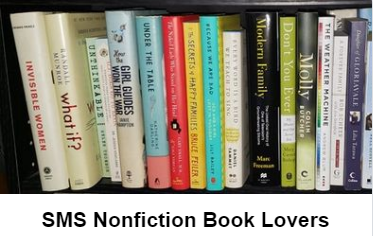Stars: *****
Houghton Mifflin Harcourt (2009)
432 pages
Adult Nonfiction
Summary: From the best-selling author of What’s Going On In There?, neuroscientist Lise Eliot shatters the myths about sex differences, arguing that few are truly innate and that the brains of boys and girls are shaped by how they spend their time. – from Thomas Allen & Sons. (Click link for longer description)
This was an AWESOME book. I am always interested in sociology and gender differences fits right in. I’ve read other books and articles on the subject but this one takes the cake. In fact this one shows why some of the other ones I read weren’t scientifically accurate. Any book that makes scientific claims needs to back them up but when I was younger, I just assumed if someone wrote a nonfiction book, they knew what they were talking about. How I of course know better.
Lise explains many different studies to back up what she says and mentions when a study is smaller and therefore can not be taken as “gospel” but with further research, can be proven one way or the other. You can tell she’s done her research and she knows what she’s talking about.
The most popular argument of course is whether boys and girls really do like different types of toys or whether we condition them that way. Lise seems to settle it once and for all. Boys and Girls DO play differently and are attracted to different toys – in GENERAL. Of course there are exceptions (which explains the boy who LOVES his dolls and the girl who rolls in the mud. However that doesn’t mean we shouldn’t encourage our boys and girls to play with the toys they tend to shy away from. Children learn different skills from different types of toys. So girls tend to be more communicative because they play with dolls and stuffed animals and play house which requires communication. Boys tend to have better large motor skills because they run around and chase, play cars and blocks. You can read more about this in the article linked below in Links of Interest.
I especially liked that the book talks about gender differences in each stage of life from prenatal to adult although there is more on children as the older you get, the harder it is to see if someone was born with that difference or just learned it throughout their life. The prenatal section was very interesting to me since I’m pregnant.
There were only two small things that I should mention about the book.
1. It’s somewhat technical. It’s not a book you can read with lots of distractions but it’s interesting enough to read through the technical parts. There would be no way the book could be written less technical though without being less believable as being a book written by a knowledgeable writer.
2. You can’t just read some and then go tell everyone what you learned without continuing to read. Many times Lise would explain something a study showed and then just when you think that explains everything, the next section explains what that studies results can’t be taken as fact. For example in the prenatal section, baby rats are studied to show how a release of androgen (hormone) affects baby boys. In the next section titled “Boys are Not Rats” it is explained why this doesn’t necessarily mean the same thing with human babies.
Overall this was a great book and one I intend to share with some people I know who would appreciate it although I’ll be holding on to it myself after that.
Links of Interest: Globe & Mail Article: Why Boys Need Barbies and Girls Need Footballs, Lise Eliot (especially check out the FAQ),
Other Reviews: Pussreboots, 5 Minutes for Mom,
Buy Pink Brain, Blue Brain at amazon.com and support SMS Book Reviews









